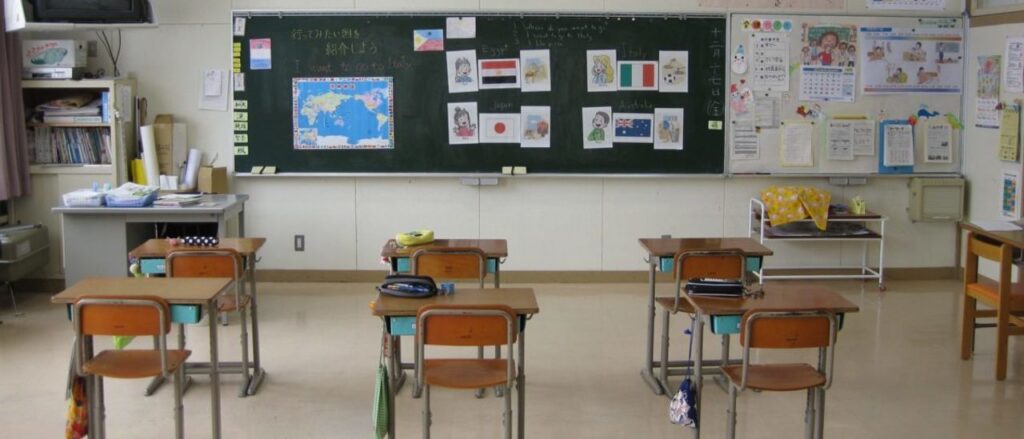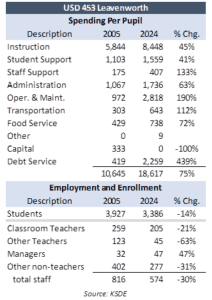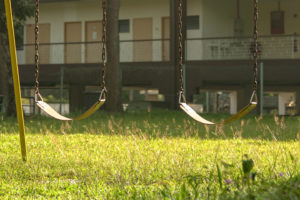Kansas superintendent says reductions in student body led to district’s $5 million shortfall
(The Sentinel) – Leavenworth USD 453 Superintendent Dr. Kellen Adams told city leaders his district is facing a $5 million budget deficit this year, due to decreased student enrollment worsened by…

(The Sentinel) – Leavenworth USD 453 Superintendent Dr. Kellen Adams told city leaders his district is facing a $5 million budget deficit this year, due to decreased student enrollment worsened by a lack of available space to build homes.
Dr. Adams told the Leavenworth City Commission the lower enrollment numbers cost USD 453 $2.5 million this year as state aid is based on a district’s student body. Increased expenses account for the other $2.5 million, according to Adams.
Points made by Adams in his 30-minute presentation to the city commission:
- USD 453’s enrollment stood at some 4,000 students at the turn of the century; it has dropped to 3,300 this year, a decline of 17.5%. The student headcount as declined 10% in the last two years alone, said Adams
- Larger graduating classes recently have not been replaced by students entering kindergarten
- The Leavenworth District is one of the smallest geographically in the state, at 17 square miles
- There is little available land on which to build single-family homes, reducing the “rooftops” in the district, according to the superintendent
“We did not spend our way into this problem,” declared Adams. “The reason I’m not so concerned now is that we have been so fiscally conservative to date, we’re going to be able to weather this storm.”
This year’s budget, however, does not support Adams’ claim of being fiscally conservative. Current spending (total less capital and debt) is budgeted for a 12% increase this year. Administration spending is 20% higher than two years ago.

The district’s employment history shows a 47% increase in the number of managers since 2005 despite a 14% enrollment decline. Inflation was 55% over the period, but Administration, Operations & Maintenance, Staff Support, Transportation and Food Service grew much faster while spending on Instruction and Student Support did not keep up with inflation.

Enrollment has declined 14% in two decades, while administrative hiring has risen 47%.
Additionally, USD 453’s unencumbered cash reserves, which are not tied to capital projects or debt service, are nearly $8 million as of this school year, an increase of over 117% since 2005.
Superintendent Adams told the city leaders the district faces three choices in balancing the budget by the end of the school year in May:
- Increase revenue sources, such as increasing the mill rate, repatriating students who have left the district, and applying for “Impact Aid” from the federal government, which provides $500 to the district for each of the 300 students in USD 453 whose parents work at a federal government agency
- Cut “low-hanging fruit”, defined by Adams as “extras” that have minimal impacts on district operations, such as software subscriptions
- Attrition, not replacing personnel who leave the district
- Reductions in Force. Adams pointed out that 85% of a district’s budget is in personnel.
We asked Karen Overbey, the newly-elected member of the USD 453 School Board, to comment on her superintendent’s presentation:
“In a nutshell, there are multiple reasons that we have declining enrollment. As far as Adams’ presentation, in his defense, I think he was trying to explain that we will have fewer students, smaller budgets, and some unavoidable increased expenditures (health and property insurance). And we will be making the necessary adjustments. Does he want to raise taxes? Of course. I know of no superintendent who doesn’t. However, I can tell you that finding ways to increase revenue without cutting anything or anyone is not how the conversations are going.
“It is my intention (and I believe the Board’s intention) to move through the process of right-sizing the district workforce through attrition, move existing employees into essential positions, prioritize classroom instruction, and hire only for the most critically needed positions. We need a leaner district laser-focused on our purpose of delivering much better results.”
Overbey added how she views issues facing the district:
Poor academic achievement:
“There are quite a few things that explain the poor academic outcomes, but I would say misplaced priorities over many years are a large contributor. Poor academic performance has no doubt contributed to our district becoming a less-than-desirable option for some families. I am cautiously hopeful that we have put in place some things that will begin to move this in a better direction, but it is an important factor in declining enrollment.”
Rise in homeschooling:
“Clearly more families are opting to homeschool their children as the failures of public education and politicization of some curriculum has come to light.”
Slow economic development:
“There are not a lot of employment options for young people to stay in Leavenworth and raise their families. Most of our young folks will move to other communities upon graduation.”
We are a transient community:
“We are a military/prison town with high rates of renters who don’t remain in the community.”
(Separate, but related) Lack of affordable housing and few new builds:
“Families looking for homes to buy and raise families are looking elsewhere because there is not much available in Leavenworth.”
Smaller and younger CGSC (Command and General Staff College) classes on Ft. Leavenworth:
“Recent officer classes have been smaller and generally younger than previous years. These officers frequently have younger children who (with more space available on the Fort) live on Ft. Leavenworth and utilize the school system there. In prior years, many of those students came to Leavenworth High School but are now moving on before coming to USD 453.”
Demographics:
“People are having fewer children. Families are smaller, and as these children enter the school district, their numbers will be less.”
We contacted Dr. Adams with questions about the district’s cash reserves and what efforts are being undertaken to increase enrollment through Kansas’s new Open Enrollment law, but he did not respond.



